
Scroll down to see all the illustrations on the page








Pages




M40 Gun Motor Carriage
The M12 Motor Gun Carriage had evolved from the conversion
of the M3 Lee Medium Tank to carry the M1917 155 mm gun
which the U.S. Army had in storage. These were only an interim
solution as the guns were well past their prime and in short
supply. In December 1943 the decision was taken to make
another gun carriage using the ‘Long Tom’ 155 mm field gun
which had been developed by the U.S. military in the 1930s,
this time using the chassis of the M4A3 Sherman medium tank.
The chassis was widened to take the new gun, while the new
high volute suspension system fitted. The engine was moved
S P E C I F I C A T I O N :
Vehicle Weight: 36.6 tons
Dimensions: Length 29 ft 8 ins, Width 10 ft 4 ins, Height 9 ft 4 ins
Powerplant: 1 x Wright Continental 395 hp petrol engine
Performance: Maximum speed 24 mph, Range 100 miles
Armament: 1 x 155 mm M2 gun, 1 x 0.5 inch machine gun
Armour: Maximum thickness 14 mm
Crew: 8
forward and an earth spade fitted to the rear of the carriage,
which when lowered absorbed most of the recoil forces of the
gun. Development of the M40 took longer than expected, and
it was not until early 1945 that the first vehicles came off the
production lines. Two M40s were taken to France and used
during the battle for Cologne before the end of World War Two.
In May 1945 the M40 became the standard 155 mm gun motor
carriage in the U.S. Army and soon replaced the M12 in service,
while a further development was the M43 Howitzer Motor
Carriage which mounted a 203 mm gun.
Country of Origin: USA
Number Built: 311
M8 Gun Motor Carriage
The M8 Gun Motor Carriage was developed on the chassis of
the M5 light tank, and had the standard turret replaced by a
large open topped unit armed with a M2 75 mm howitzer. The
driver’s hatches were moved from the hull roof to the glacis
plate to accommodated the new turret. 46 rounds could be
carried, while for close defence a 0.50 calibre Browning
machine gun was mounted at the rear of the turret. The M8
was ordered into production in April 1942 and entered service
later in the year. They first saw service during the Italian
campaign in 1943, where they were used by the HQ companies
S P E C I F I C A T I O N :
Vehicle Weight: 15.7 tons
Dimensions: Length 16 ft 4 ins, Width 7 ft 5 ins, Height 8 ft 11 ins
Powerplant: 1 x Twin cadillac V8 petrol engine rated at 290 hp
Performance: Maximum speed 36 mph, Range 70 miles
Armament: 1 x 37 mm gun + 5 x 7.62 mm machine guns
Armour: Maximum thickness 43 mm
Crew: 4
of tank battalions to provide fire support. The M8 was also
used in Normandy following the D-Day landings, where the
fighting in the bocage country caused many casualties to the
crews fighting in the open topped turret. The M8 remained in
use until the end of the war in Europe, with a few taking part in
the fighting at Bastogne during the battle of the Bulge in
December 1944. The M8 was also used in the Pacific where it
was first used on Saipan in June 1944, providing fire support
for light tank companies. Production of the M8 ended in
January 1944 after 1,778 vehicles had been built.
Country of Origin: USA
Number Built: 1,778

S E L F - P R O P E L L E D G U N
Karl-Gerat 040/041 Mortar
In March 1936 Rheinmetall made a proposal for a super heavy
howitzer to attack the Maginot Line. The initial concept was for
a weapon that would be transported and assembled on site,
but this was changed to a self-propelled weapon in early 1937.
Extensive trials took place in 1938 and 1939 using a scale
model to investigate the high ground pressure and steering of
such an enormous vehicle, with trials of the prototype being
carried out in May 1940. General Karl Becker of the Artillery
was involved in the development, from whom they gained their
nickname. In total, seven were built, the first was the research
S P E C I F I C A T I O N :
Vehicle Weight: 124 tons
Dimensions: Length 36 ft 7 ins, Width 10 ft 4 ins, Height 14 ft 4 ins
Powerplant: 1 x 580 hp Daimler-Benz petrol or diesel engine
Performance: Maximum speed 6 mph, Range 37 miles
Armament: 1 x 60 cm or 54 cm mortar
Armour: Maximum 80 mm
Crew: 21
and test weapon (Versuchs-Gerät), and six production vehicles
which entered service from late 1940 to mid 1941. They were
originally armed with a 60 cm mortar that had a range of just
over 4 miles, and in an attempt to increase the range a 54 cm
interchangeable barrel was developed which had a range of
6.2 miles. They were mainly deployed on the Eastern Front,
most notably during the siege of Sevastopol. At least two were
used in the west, one vehicle firing fourteen rounds at the
Ludendorff bridge at Remagan in an attempt to destroy it after
it had been captured by the Americans in March 1945.
Country of Origin: Germany
Number Built: 7
15 cm sIG 33 Panzerkampfwagen II
For the invasion of France in 1940, Germany produced a heavy
self propelled gun by mating the 15 cm sIG 33 infantry gun to
the hull of the Panzer I Ausf B. This was a lash up arrangement,
and in service the gun proved to be too heavy for the chassis
while the gun house was very tall. The idea however was sound,
so it was decided to mate the same gun to a Panzer II chassis
in an attempt to make a more effective weapons system. A
prototype was ready in February 1941 using a standard Panzer
II chassis, but this proved to be too cramped for operational
use, so the chassis was lengthened by 2 feet and increased in
S P E C I F I C A T I O N :
Vehicle Weight: 11.2 tons
Dimensions: Length 17 ft 7 ins, Width 8 ft 5 ins, Height 6 ft 2 ins
Powerplant: 1 x 140 hp Maybach petrol engine
Performance: Maximum speed 25 mph, Range 120 miles
Armament: 1 x 15 cm sIG 33 gun, 1 x 7.92 mm machine gun
Armour: Maximum thickness 30 mm
Crew: 4
width by 13 inches which required an extra road wheel to be
fitted each side. The enlarged chassis accommodated the gun
far better and a lower silhouette was achieved. The fighting
compartment was constructed of 15 mm plates which was
open at the top and the rear. Known as the 15cm SiG33 auf
Fahrgestell Panzerkampfwagen II (Sf), twelve were built in late
1941 and sent to North Africa in early 1942. They arrived in
time to take part in the German attack at Gazala, where they
provided valuable support for the infantry, and remained in
service until the last vehicle was destroyed in early 1943.
Country of Origin: Germany
Number Built: 12

S E L F - P R O P E L L E D G U N
10.5 cm Panzerkampfwagen II ‘Wespe’
By 1942 the Panzer II was virtually obsolete on the battlefield
and it was decided to use the Panzer II chassis as a carriage for
the standard 10.5 cm field howitzer. A design was produced by
Alkett, who had earlier worked on converting captured French
armoured vehicles. This involved moving the engine forward
and slightly lengthening the chassis to gain sufficient space for
the howitzer. The superstructure was only lightly armoured,
being constructed of 10 mm armour plate which was sufficient
to stop small arms fire, while the fighting compartment was
open at the top and to the rear. The Wespe was placed in
S P E C I F I C A T I O N :
Vehicle Weight: 11 tons
Dimensions: Length 15 ft 9 ins, Width 7 ft 6 ins, Height 7 ft 7 ins
Powerplant: 1 x 140 hp Maybach petrol engine
Performance: Maximum speed 25 mph, Range 135 miles
Armament: 1x 10.5 cm leFH gun
Armour: Maximum 30 mm
Crew: 5
production in February 1943 at FAMO's Ursus plant in Warsaw,
and were first used in combat on the Eastern Front later that
year. The Wespe proved successful in action, and all further
production of the Panzer II chassis was concentrated on the
production of the vehicle. The Wespe was allocated to the
armoured artillery battalions of Panzer divisions, along with the
heavier Hummel self-propelled gun which was based on a
Panzer III/IV chassis. Production of the Wespe ended in June
1944 when Soviet forces closed in on the Polish border, by
which time 676 had been produced.
Country of Origin: Germany
Number Built: 676

S E L F - P R O P E L L E D G U N
Alecto Self-Propelled Gun
After the formation of the British Airborne forces in late 1940 a
request was made to provide an air portable self propelled
gun to provide mobile artillery support. In 1942 a design was
prepared based on the A25 light tank which was armed with a
95 mm howitzer mounted low in the hull within an open
topped fighting compartment. Named Alecto, two prototypes
were built, and like the A25 Harry Hopkins the Alecto had skid
steering which was operated by bowing the tracks through
lateral movements of the central road wheels. The first trials of
the prototypes did not start until late 1944 which revealed
S P E C I F I C A T I O N :
Vehicle Weight: 8.64 tons
Dimensions: Length 14 ft, Width 8 ft 10 ins, Height 6 ft 11 ins
Powerplant: 1 x 148 hp Meadows petrol engine
Performance: Maximum speed 30 mph, Range 125 miles
Armament: 1 x 95 mm howitzer
Armour: Maximum 38 mm
Crew: 3-4
various problems, and by the time these were solved the war in
Europe was over and the prospect of their use in the Far East
was minimal so the project was cancelled. Other members of
the family had been proposed. A Mk II prototype had been built
armed with a 6 pounder anti-tank gun. The Mk III would have
been armed with a 25 pounder and the Mk IV a 32 pounder
howitzer. A few prototypes were briefly used by armoured car
units before being withdrawn and modified into armoured
bulldozers, the gun being replaced by a hydraulic blade before
they were handed over to the Royal Engineers.

Country of Origin: UK
Number Built: 2
S E L F - P R O P E L L E D G U N
M12 Gun Motor Carriage
By mid 1941 the U.S. Ordnance Department had carried out
studies into the possibility of mounting a 155 mm gun on the
chassis of the M3 medium tank. work began on a prototype
which was armed with the M1918Ma 155 mm gun, which was
based on the French 155 mm GPF field gun of World War One
vintage. The engine was moved to the middle of the vehicle to
make space for the gun which was mounted to the rear of the
chassis, a platform being provided for the gun crew, while an
earth spade at the rear was deployed to absorb the recoil
shock when the gun was fired. After a few problems had been
S P E C I F I C A T I O N :
Vehicle Weight: 26 tons
Dimensions: Length 22 ft 1 ins, Width 8 ft 9 ins, Height 8 ft 10 ins
Powerplant: 1 x Wright Continental 340 hp petrol engine
Performance: Maximum speed 23.5 mph, Range 140 miles
Armament: 1 x 155 mm M1917 gun, 1 x 0.5 inch machine gun
Armour: Maximum thickness 14 mm
Crew: 6
rectified an order for 100 vehicles was issued with production
commencing in early 1943. For local defence they were armed
with a 0.50 inch Browning machine gun on a ring mount. The
final M12 was completed in March 1943, and for most of the
year they were either mothballed or used for training. In 1944
the M12 were first used in action after the D-Day landings in
June and served throughout the rest of the campaign in North-
West Europe until the end of the war. The M12 was declared
obsolete after the war and the surviving vehicles scrapped in
favour of the M40 155 mm Gun Motor carriage.
Country of Origin: USA
Number Built: 100
S E L F - P R O P E L L E D G U N
Sturminfanteriegeschütz 33B
Shortly after the German invasion of Russia in June 1941, Alkett
received an order to produce a heavily armoured vehicles that
would be armed with the 15cm sIG33 field gun. Known as the
Sturminfanteriegeschütz 33B. The design used the chassis of
the Sturmgeschütz III assault gun with a new, fully enclosed and
heavily armoured box superstructure mounted on top which
housed the improved sIG 33/1 infantry gun mounted at the
front and a MG 34 machine gun in a ball mount fitted to its
right. Twelve were ordered which were completed in January
1942, with a further twelve being ordered in September. At the
S P E C I F I C A T I O N :
Vehicle Weight: 21 tons
Dimensions: Length 17 ft 9 ins, Width 9 ft 6 ins, Height 7 ft 7 ins
Powerplant: 1 x Maybach 296 hp petrol engine
Performance: Maximum speed 12 mph, Range 68 miles
Armament: 1 x 15 cm sIG 33/1 gun, 1 x 7.92 mm MG34
Armour: Maximum thickness 80 mm
Crew: 5
end of October twelve had been assigned to Assault Gun
Battalions 177 and 244 which became involved in the fighting
for Stalingrad. The final twelve vehicles were to be issued to
Assault Battalions 243 and 245, also fighting in Stalingrad, but
this became impossible after the Soviets surrounded the 6th
Army. Instead they were issued to the 9th Company of the
201st Panzer Regiment as part of the relieving force sent to
break the encirclement. All the vehicles fighting in Stalingrad
were lost during the fighting, while the last report of their use
was September 1944 when five were listed as being in service.
Country of Origin: Germany
Number Built: 24

43M Zrinyi I Assault Gun
Following the success of assault guns on the Eastern Front, the
Hungarians developed their own model that was based on the
chassis of the 40M Turán I tank. There were two designs, the
44M Zrínyi I which was armed with a long 43M 75 mm gun and
intended to undertake the anti-tank role but did not progress
beyond the prototype stage. The second was the 40/43M Zrínyi
II which was armed with the short barrelled 105 mm MÁVAG
40/43M howitzer and was designed as a traditional infantry
support vehicle. The Zrínyi II was accepted for service in March
1943 and production was to commence as quickly as possible,
S P E C I F I C A T I O N :
Vehicle Weight: 21.6 tons
Dimensions: Length 18 ft 8 ins, Width 9 ft 10 ins, Height 7 ft 8 ins
Powerplant: 1 x 260 hp Manfred-Weiss petrol engine
Performance: Maximum speed 27 mph, Range 140 miles
Armament: 1 x 75 mm 43M gun
Armour: Maximum thickness 75 mm
Crew: 4
but only 66 had left the factory by July 1944 when the Soviets
overrun the area. In Hungarian service it was hoped to form
similar units to the German four vehicle batteries at division
level, but there were never enough for this, instead they were
deployed with the 1st, 2nd and 3rd assault battalions. These
units became caught up in the fighting on the Eastern Front
during the massive Soviet offensive in the summer of 1944,
and after surviving forces had retreated from Transylvania by
September-October, many were captured and used for some
time by Romanian troops who had by then switched sides.
Country of Origin: Hungary
Number Produced: 1
S E L F - P R O P E L L E D G U N


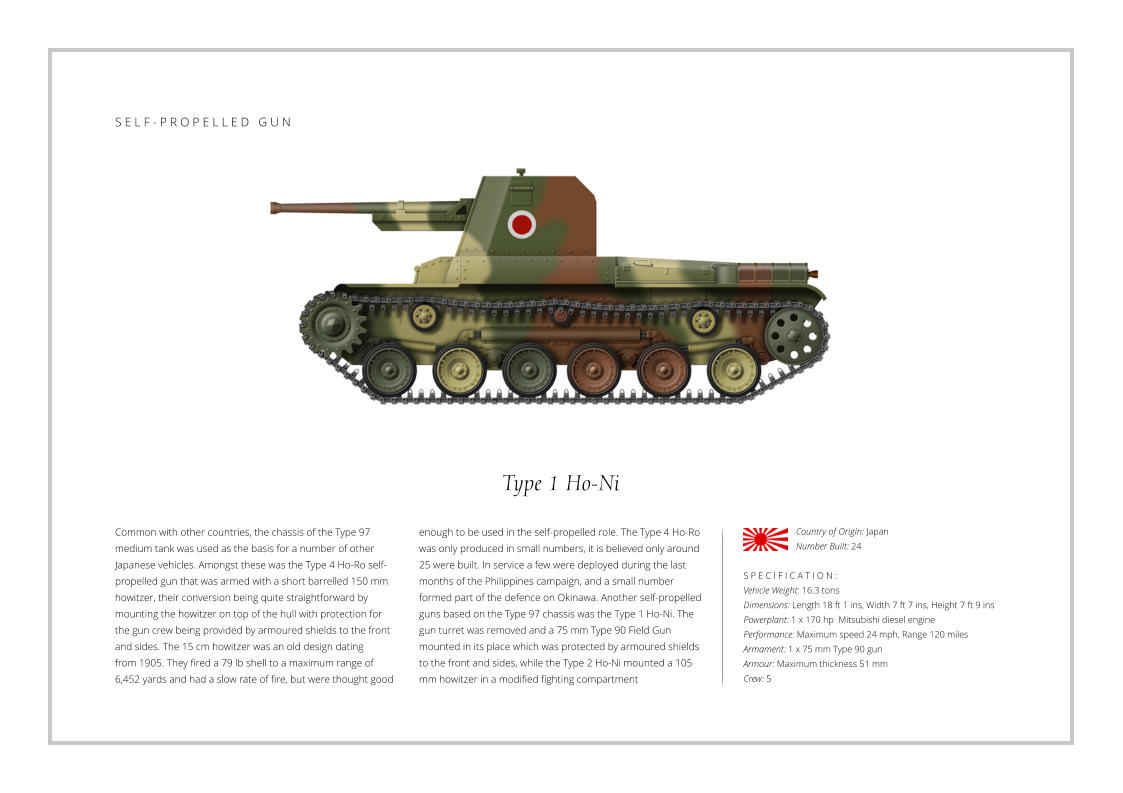
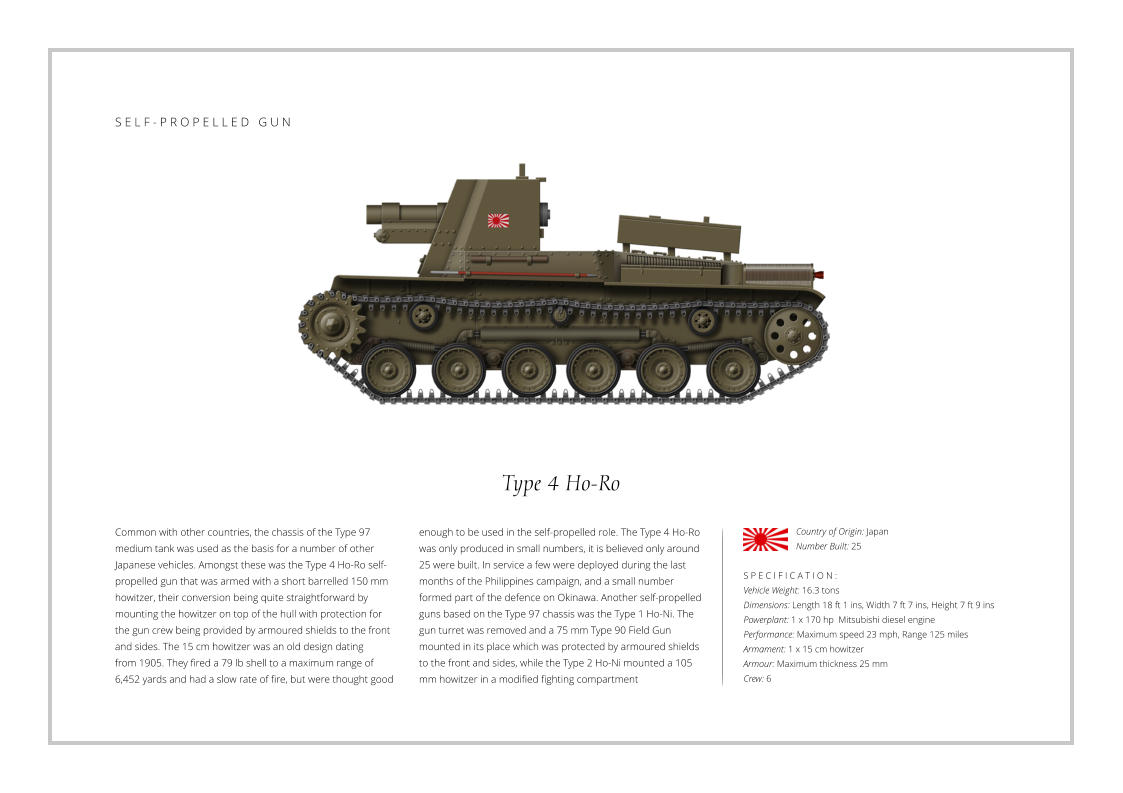
Sturmpanzer IV ‘Brummbar’
The Sturmpanzer IV Brummbar was a heavily armoured
infantry support vehicle designed for fighting in urban areas.
It used a Panzer IV chassis with the upper hull and turret
replaced by an armoured superstructure housing a 15 cm
43 L/12 gun. Production of the first series of 60 vehicles began
in April 1943, but these early vehicles were too heavy for the
chassis which resulted in frequent breakdowns. The situation
was improved on the second series which used the latest Ausf
H chassis, production recommencing in December 1943. The
Brummbar was first used in action during the Battle of Kursk
S P E C I F I C A T I O N :
Weight: 28.2 tons
Dimensions: Length 19 ft 5 ins, Width 9 ft 5 ins, Height 8 ft 3 ins
Powerplant: 1 x 300 hp Maybach petrol engine
Performance: Maximum speed 25 mph, Range 130 miles
Armament: 1 x 15 cm StuH 43 L/12 gun, 1 x 7.92 machine gun
Armour: Maximum thickness 100 mm
Crew: 5
where the driver's compartment proved to be too lightly
armoured and was later reinforced. The gunner's hatch was
removed and a ventilator fan fitted, much to the relief of the
crew. Internally sprung, steel rimmed road wheels replaced the
front two rubber rimmed road wheels in an effort to reduce
the stress on the forward suspension, this however was only
partially successful. Production of the Sturmpanzer IV ran
through four series which ended in March 1945, and in total
306 were built, most of them serving on the Eastern Front, with
a small number serving in both Italy and France.
Country of Origin: Germany
Number Built: 306

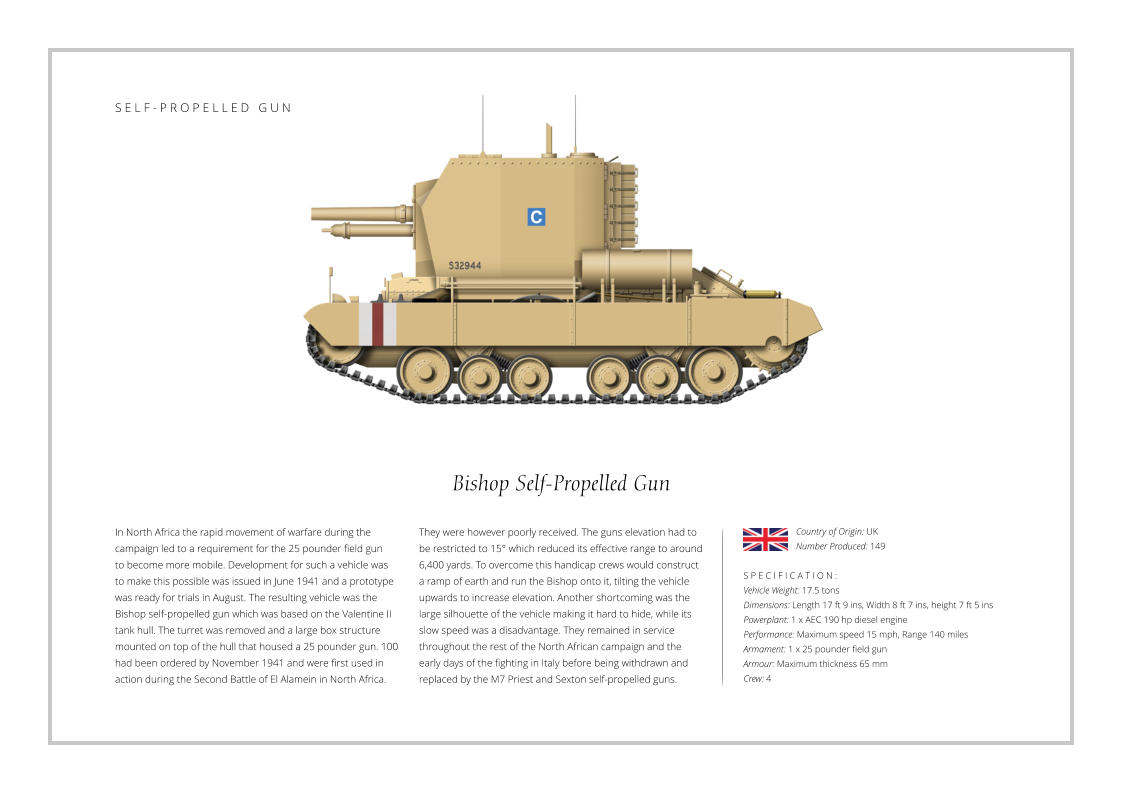
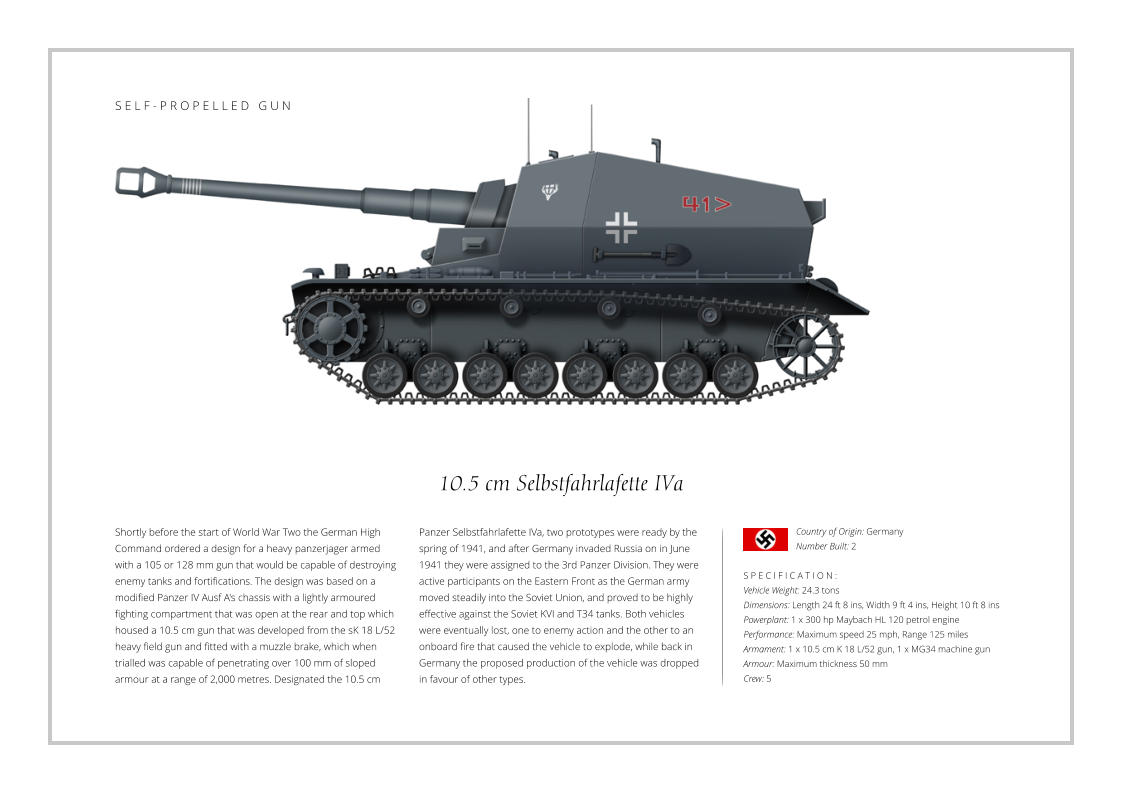
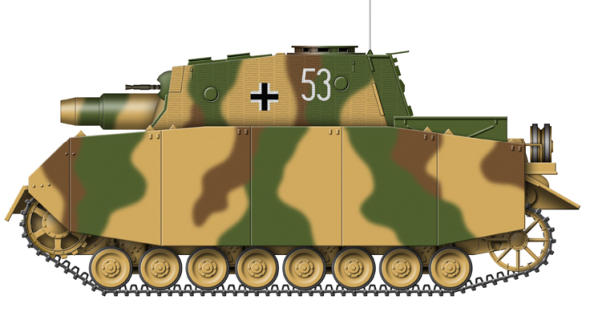
S E L F - P R O P E L L E D G U N
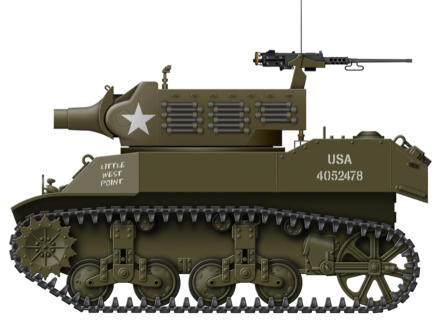
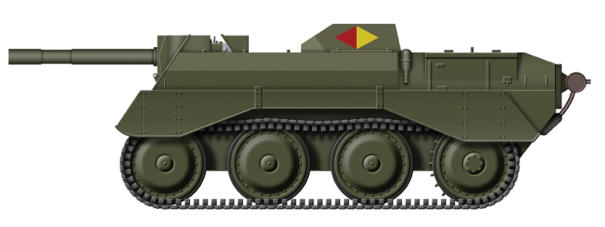
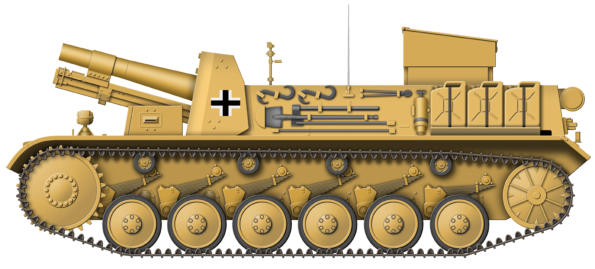
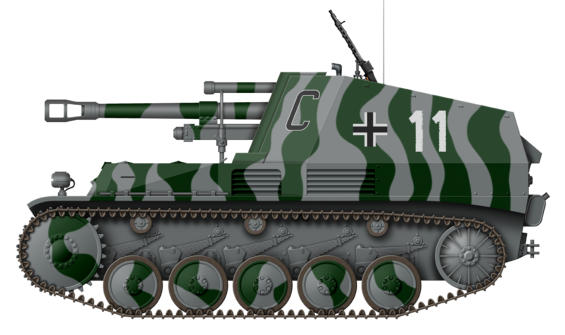
‘Sexton’ Self-Propelled Gun
The Sexton self-propelled gun came about because of the
logistical problems in the British Army using the U.S. M7 105
mm Gun Motor Carriage. A requirement was quickly drawn up
for a similar vehicle armed with the British 25 pounder field
gun which would ease ammunition supply. The Canadian Ram
tank chassis was selected for conversion and a prototype was
completed by the Montreal Locomotive Works in June 1942.
The vehicle was soon accepted for service and named Sexton
with production starting in early 1943. The 25 pounder field
gun was mounted in an armoured compartment which gave
S P E C I F I C A T I O N :
Weight: 25 tons
Dimensions: Length 20 ft 1 ins, Width 8 ft 11 ins, Height 8 ft
Powerplant: 1 x 400 hp Continental radial engine
Performance: Maximum speed 25 mph, Range 125 miles
Armament: 1 x 25 pounder field gun + 2 x Bren machine guns
Armour: Maximum thickness 32 mm
Crew: 6
the gun crew protection against small arms fire. 105 rounds
could be carried, while local defence was provided by one or
two Bren machine guns. The first 125 vehicles were based on
the Ram tank chassis and known as Sexton I, but production
was switched from the Ram to the Grizzly chassis in 1943, and
along with other minor improvements were known as Sexton II.
They made their debut in action during the Italian campaign in
1943 and were used by British and Canadian forces throughout
the rest of the war in Europe. Production continued until 1945,
by which time 2,150 had been built.
Country of Origin: Canada
Number Built: 2,150

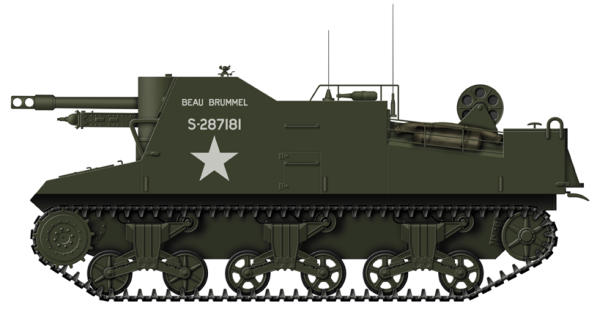
S E L F - P R O P E L L E D G U N

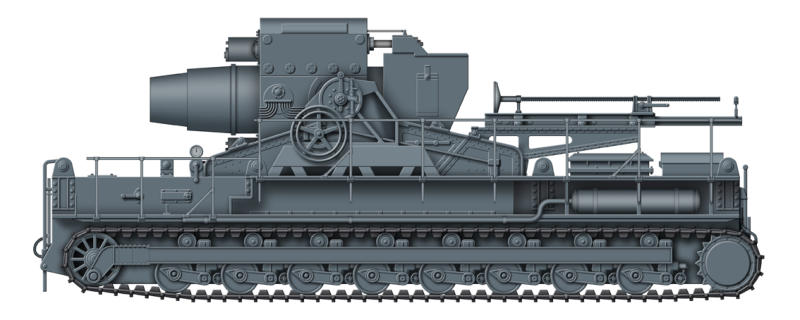
S E L F - P R O P E L L E D G U N
S E L F - P R O P E L L E D G U N
Karl-Gerat 040/041 Mortar
In March 1936 Rheinmetall made a proposal for a super heavy
howitzer to attack the Maginot Line. The initial concept was for
a weapon that would be transported and assembled on site,
but this was changed to a self-propelled weapon in early 1937.
Extensive trials took place in 1938 and 1939 using a scale
model to investigate the high ground pressure and steering of
such an enormous vehicle, with trials of the prototype being
carried out in May 1940. General Karl Becker of the Artillery
was involved in the development, from whom they gained their
nickname. In total, seven were built, the first was the research
S P E C I F I C A T I O N :
Vehicle Weight: 124 tons
Dimensions: Length 36 ft 7 ins, Width 10 ft 4 ins, Height 14 ft 4 ins
Powerplant: 1 x 580 hp Daimler-Benz petrol or diesel engine
Performance: Maximum speed 6 mph, Range 37 miles
Armament: 1 x 60 cm or 54 cm mortar
Armour: Maximum 80 mm
Crew: 21
and test weapon (Versuchs-Gerät), and six production vehicles
which entered service from late 1940 to mid 1941. They were
originally armed with a 60 cm mortar that had a range of just
over 4 miles, and in an attempt to increase the range a 54 cm
interchangeable barrel was developed which had a range of
6.2 miles. They were mainly deployed on the Eastern Front,
most notably during the siege of Sevastopol. At least two were
used in the west, one vehicle firing fourteen rounds at the
Ludendorff bridge at Remagan in an attempt to destroy it after
it had been captured by the Americans in March 1945.
Country of Origin: Germany
Number Built: 7

Karl-Gerat 040/041 Mortar
In March 1936 Rheinmetall made a proposal for a super heavy
howitzer to attack the Maginot Line. The initial concept was for
a weapon that would be transported and assembled on site,
but this was changed to a self-propelled weapon in early 1937.
Extensive trials took place in 1938 and 1939 using a scale
model to investigate the high ground pressure and steering of
such an enormous vehicle, with trials of the prototype being
carried out in May 1940. General Karl Becker of the Artillery
was involved in the development, from whom they gained their
nickname. In total, seven were built, the first was the research
S P E C I F I C A T I O N :
Vehicle Weight: 124 tons
Dimensions: Length 36 ft 7 ins, Width 10 ft 4 ins, Height 14 ft 4 ins
Powerplant: 1 x 580 hp Daimler-Benz petrol or diesel engine
Performance: Maximum speed 6 mph, Range 37 miles
Armament: 1 x 60 cm or 54 cm mortar
Armour: Maximum 80 mm
Crew: 21
and test weapon (Versuchs-Gerät), and six production vehicles
which entered service from late 1940 to mid 1941. They were
originally armed with a 60 cm mortar that had a range of just
over 4 miles, and in an attempt to increase the range a 54 cm
interchangeable barrel was developed which had a range of
6.2 miles. They were mainly deployed on the Eastern Front,
most notably during the siege of Sevastopol. At least two were
used in the west, one vehicle firing fourteen rounds at the
Ludendorff bridge at Remagan in an attempt to destroy it after
it had been captured by the Americans in March 1945.
Country of Origin: Germany
Number Built: 7

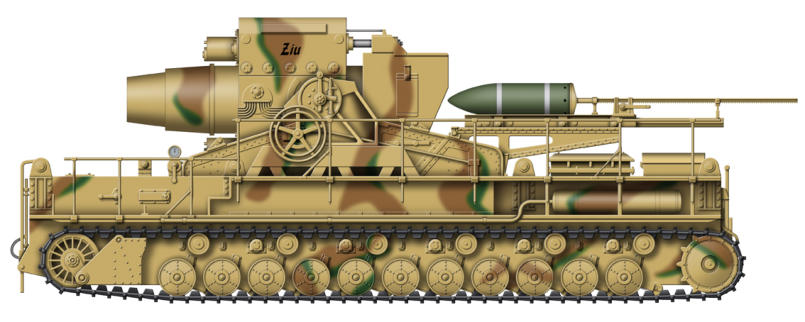
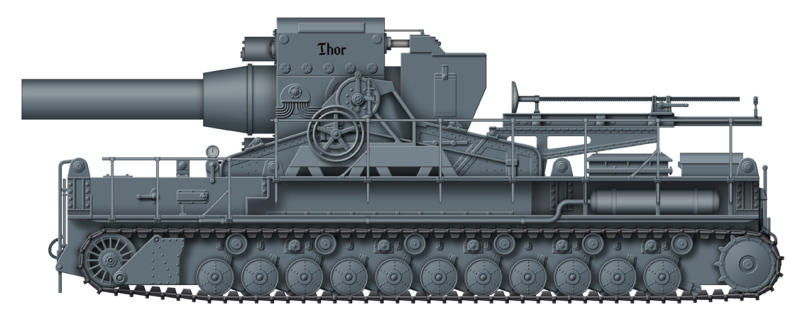
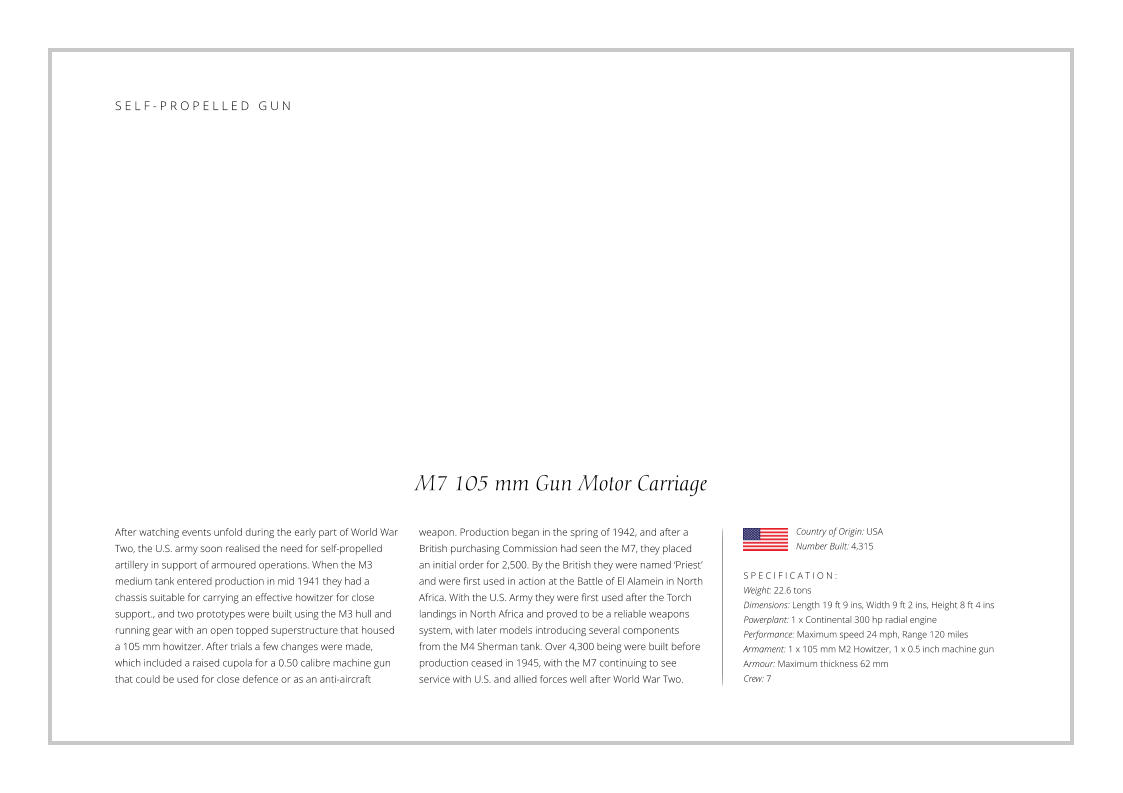
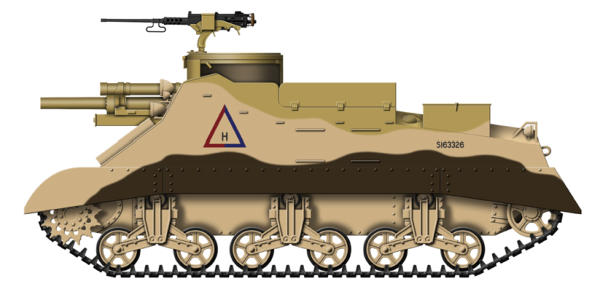

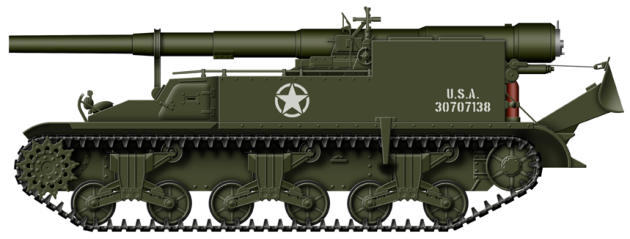
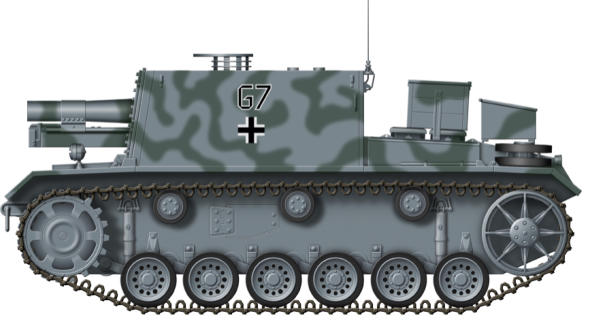
S E L F - P R O P E L L E D G U N
S E L F - P R O P E L L E D G U N
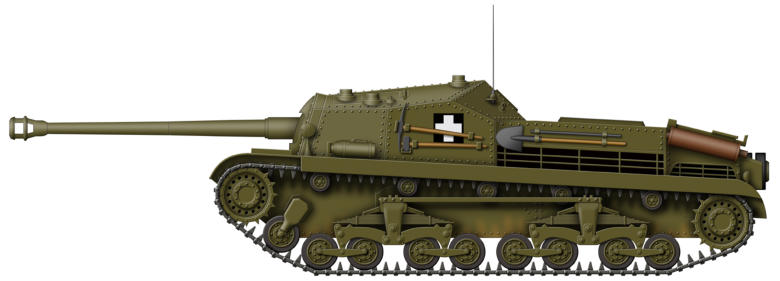
43M Zrinyi II Assault Gun
Following the success of assault guns on the Eastern Front, the
Hungarians developed their own model that was based on the
chassis of the 40M Turán I tank. There were two designs, the
44M Zrínyi I which was armed with a long 43M 75 mm gun and
intended to undertake the anti-tank role but did not progress
beyond the prototype stage. The second was the 40/43M Zrínyi
II which was armed with the short barrelled 105 mm MÁVAG
40/43M howitzer and was designed as a traditional infantry
support vehicle. The Zrínyi II was accepted for service in March
1943 and production was to commence as quickly as possible,
S P E C I F I C A T I O N :
Vehicle Weight: 21.6 tons
Dimensions: Length 18 ft 8 ins, Width 9 ft 10 ins, Height 7 ft 8 ins
Powerplant: 1 x 260 hp Manfred-Weiss petrol engine
Performance: Maximum speed 27 mph, Range 140 miles
Armament: 1 x 105 mm MÁVAG 40/43M L20.5 howitzer
Armour: Maximum thickness 75 mm
Crew: 4
but only 66 had left the factory by July 1944 when the Soviets
overrun the area. In Hungarian service it was hoped to form
similar units to the German four vehicle batteries at division
level, but there were never enough for this, instead they were
deployed with the 1st, 2nd and 3rd assault battalions. These
units became caught up in the fighting on the Eastern Front
during the massive Soviet offensive in the summer of 1944,
and after surviving forces had retreated from Transylvania by
September-October, many were captured and used for some
time by Romanian troops who had by then switched sides.
Country of Origin: Hungary
Number Produced: 66
S E L F - P R O P E L L E D G U N
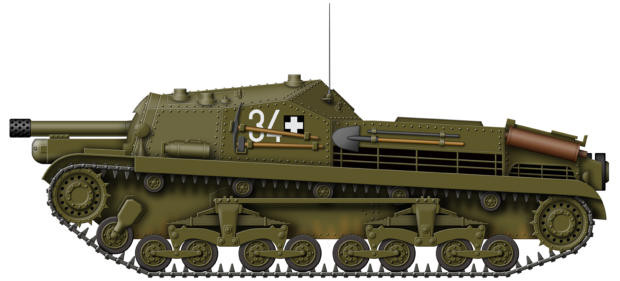



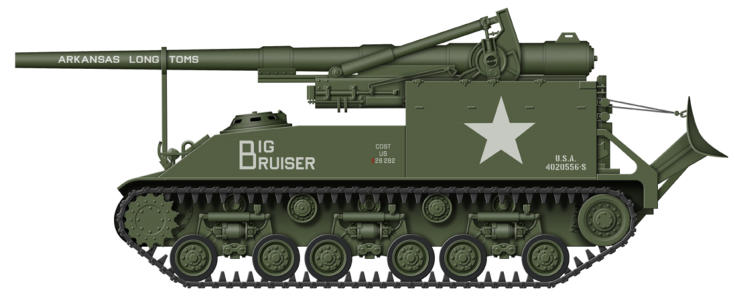
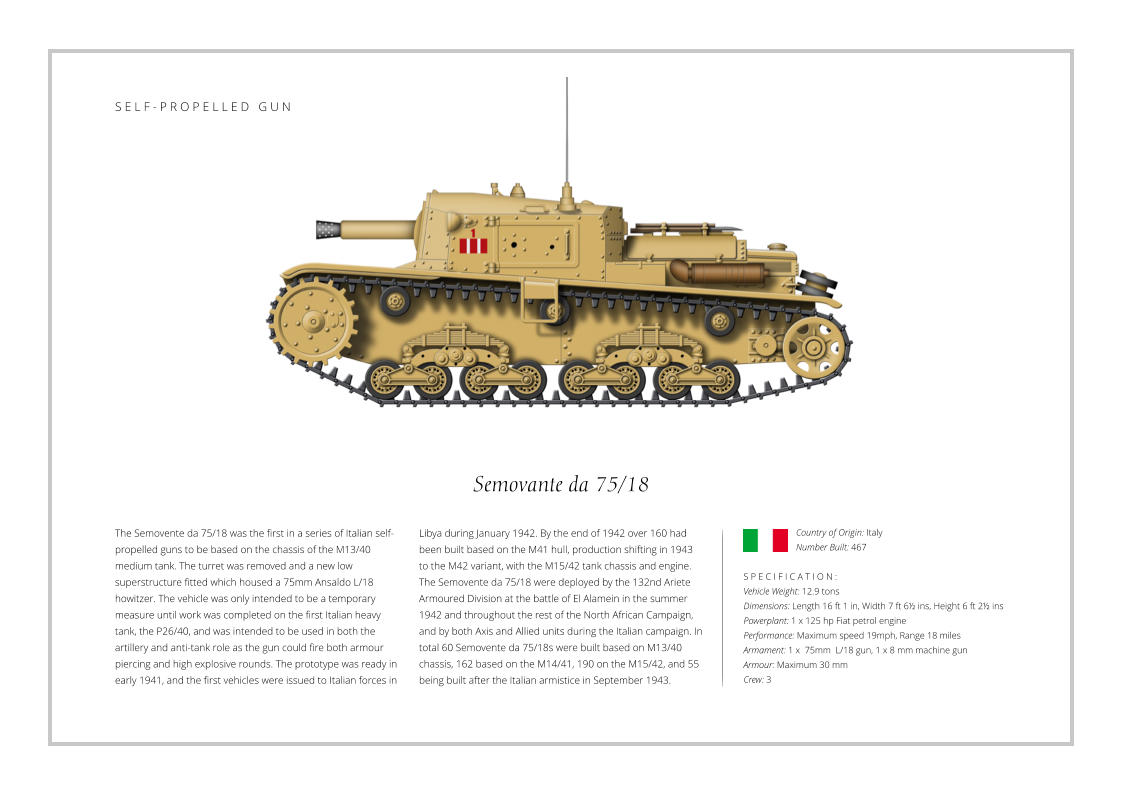
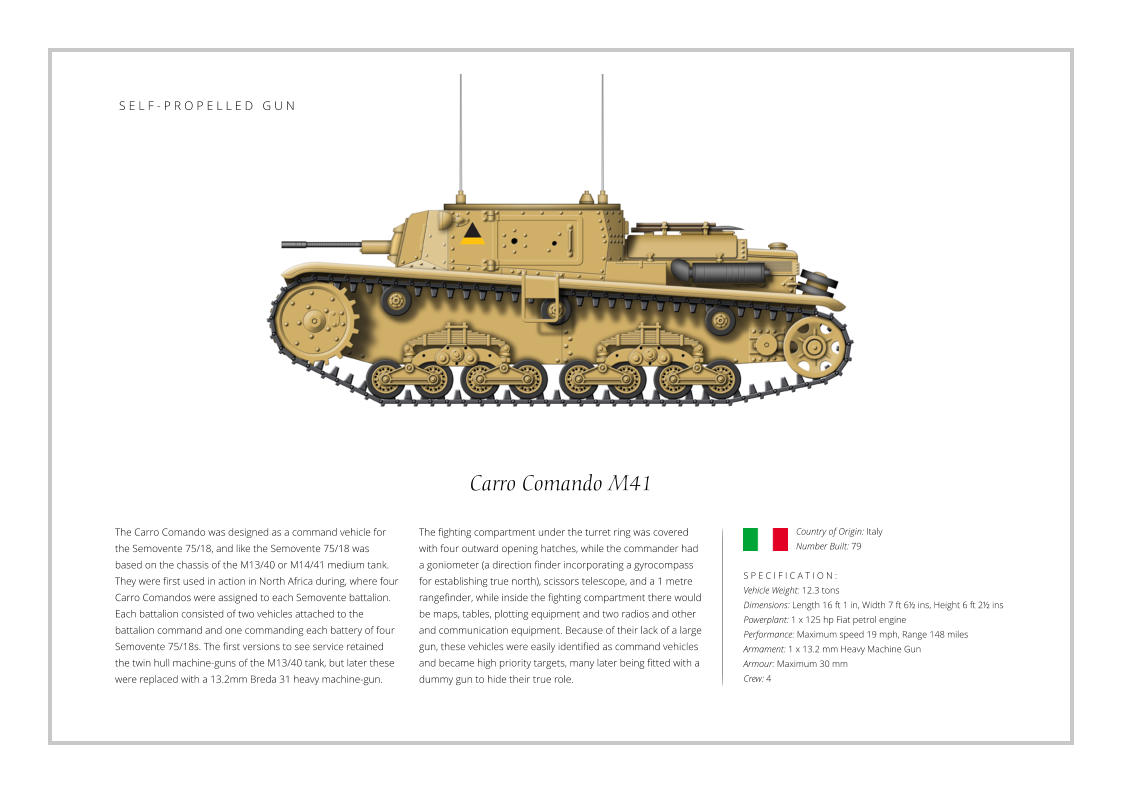
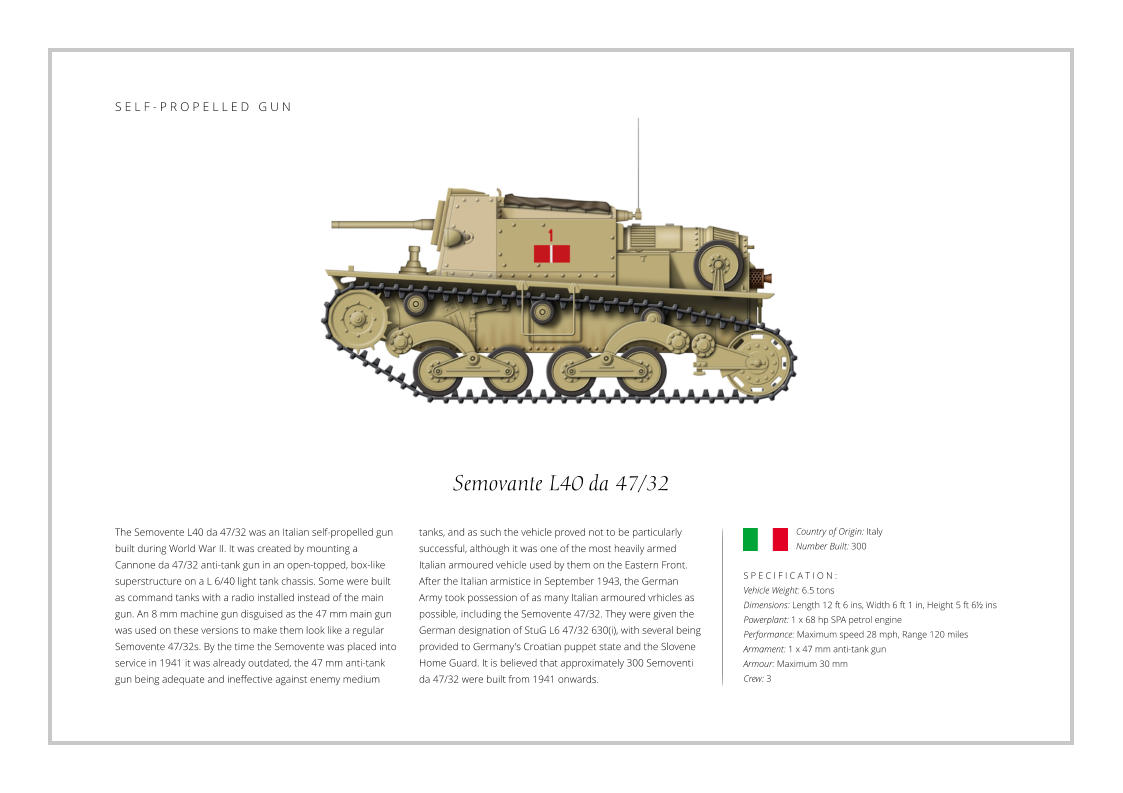
S E L F - P R O P E L L E D G U N
S E L F - P R O P E L L E D G U N
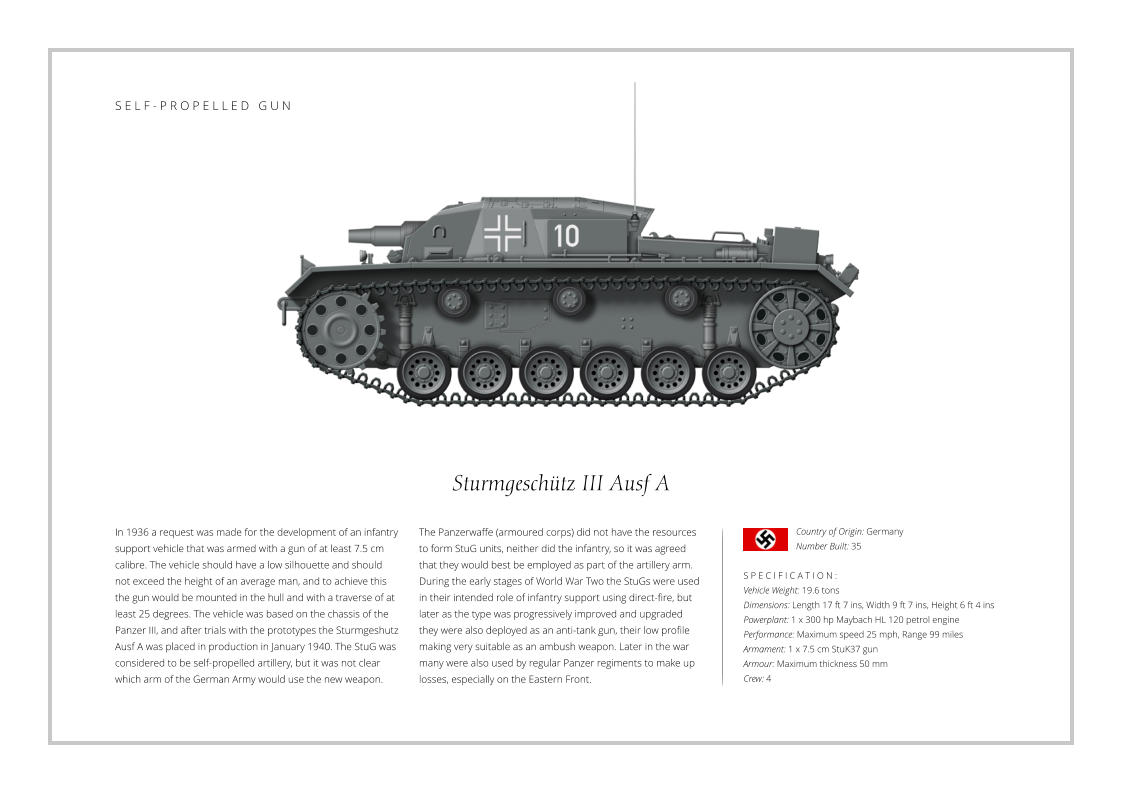
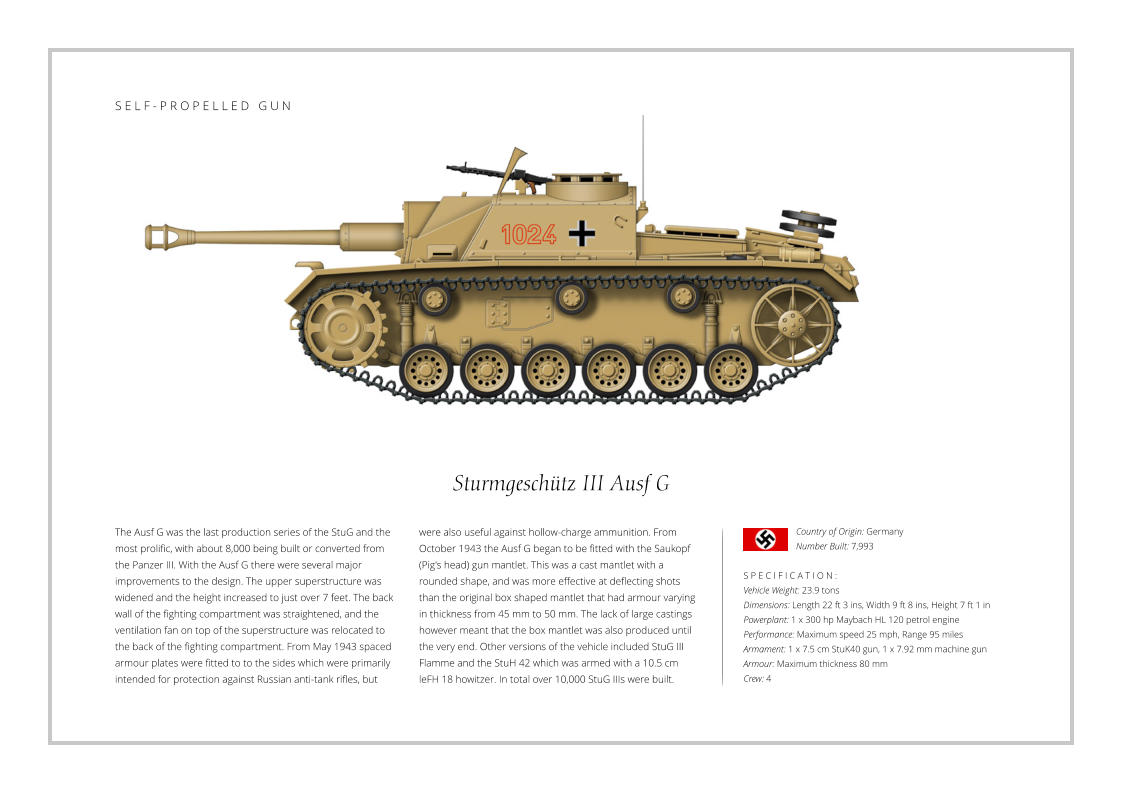
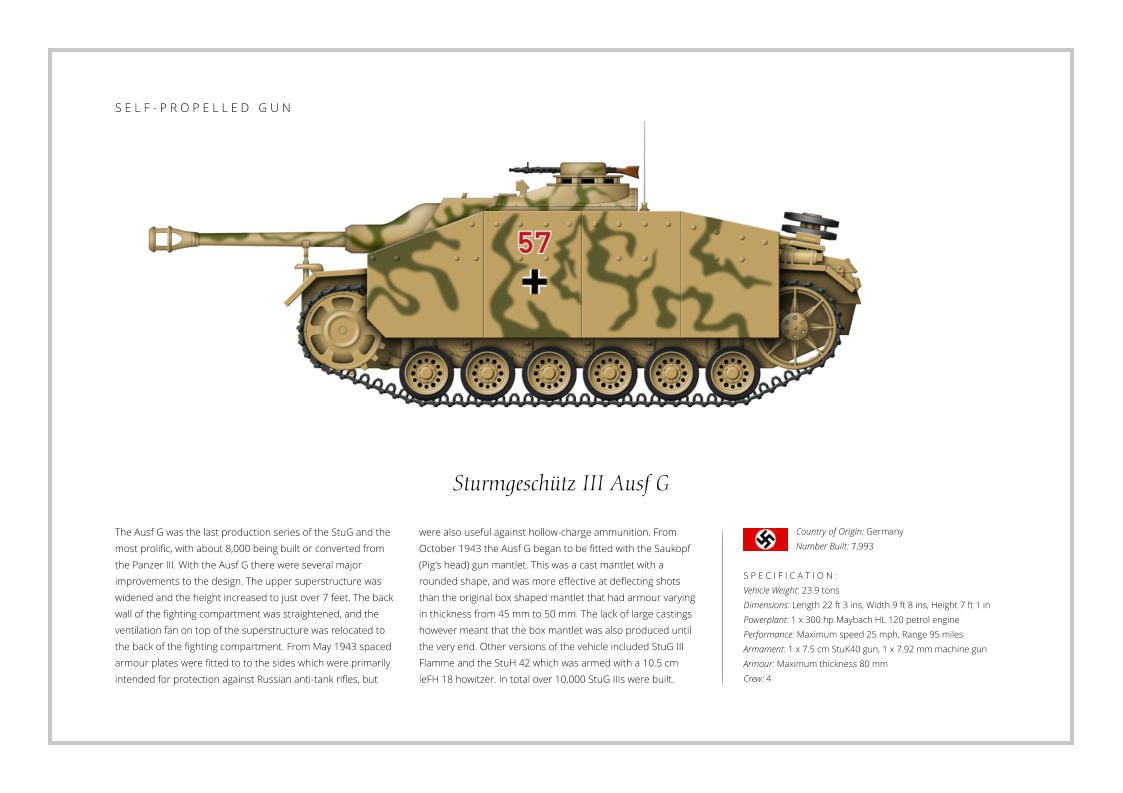








Pages





